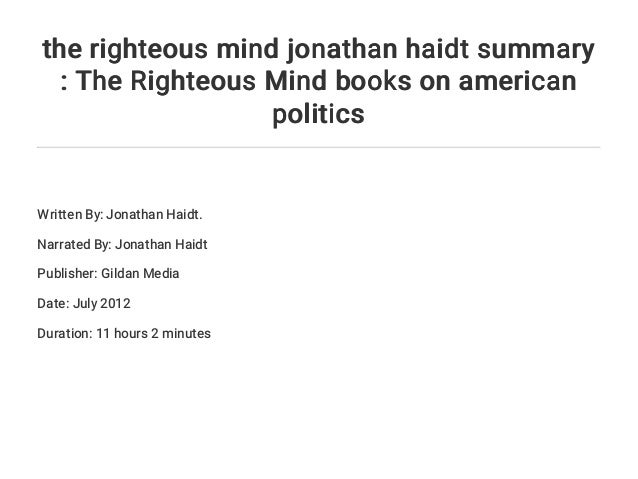



From introduction to conclusion, he contrasts his view on basic human nature’s selfishness with his optimism for its ability to transcend self-interest through more knowledge and moral evolution. He acknowledges his own biases and retains general respect for other perspectives while offering thoughtful criticism on weaknesses and strengths of liberal, conservative, and libertarian viewpoints. He carefully defines his terms, cites his sources, and repeats summaries to ensure he successfully conveys his main points. Haidt offers a readable, positive, and well-structured account of his ideas written in the style of a friendly mentor. From his observation and caveat that morality binds and blinds, he writes passionately to remove barriers to civility from his readers’ vision and broaden understanding for opposing viewpoints. Built on six common moral foundations to classify values, he shows how these work to understand fundamental issues among political parties. Sharing research and life-experience conclusions that show intuition precedes strategic reasoning, he shapes his argument to present the book’s summit achievement, his Moral Foundations Theory. Haidt offers an olive branch and hope for civility to readers engaged in discussions on US politics and religion from his work in moral psychology.


 0 kommentar(er)
0 kommentar(er)
